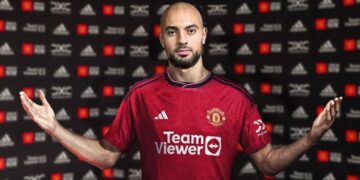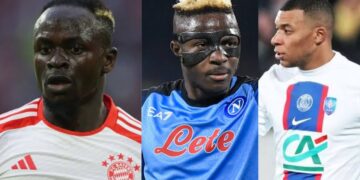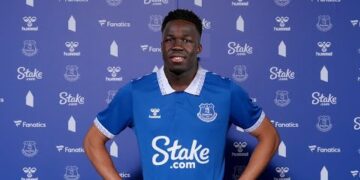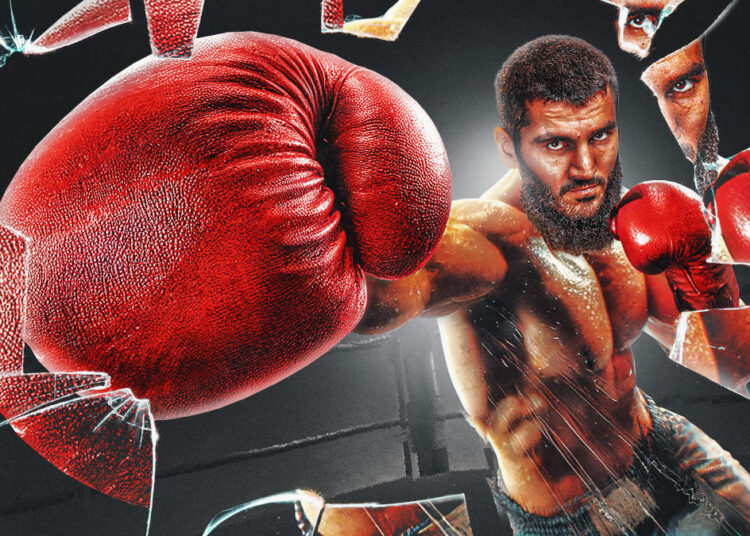For an hour or so it was actually fun. It was fun to watch, from a safe distance, three masked men floor a fourth man and proceed to stamp all over his head and naked torso on a Tuesday night in Mexico City. To watch it unfold was kind of entertaining, humorous even, and never was there any concern about what might happen to the grounded man, nor any feeling of complicity on our part.
It was violence, yes, but a safe, controlled violence. It was, for someone who has seen it done wrong, fighting done right. From plastic seats sold to us cheap, we were able to watch grown men kick, punch, elbow, head-lock and bite each other and were reassured to know that everything, despite the threat level, would turn out OK. Nobody was getting hurt — not really — and nobody was getting knocked out, at least not by design. Instead, they always got up inside Arena México, they lived to fight another day, and we, the audience, were absolved of any of the guilt or shame we may experience in an environment not so controlled.
In the world of lucha libre wrestling, you see, the “pain” of another human being is celebrated, both by the wrestlers administering it and the spectators watching from plastic seats, all of whom are periodically interrupted by venue employees marching down the aisles offering pizza, popcorn, tortillas, crisps and beer, as well as replica masks and capes. It is at that point the atmosphere inside Arena México suggests not a fight but a matinee showing of a kids’ film. Or simply a pantomime. In the ring there are bad guys and there are good guys — babyfaces and heels — and parents and children alike know when to cheer and when it is appropriate to boo. Nothing, to them, comes as a shock, for it is a movie they have all seen before. They know its plot. They know the characters. They know, in the end, it is just a movie.
The villain of this night’s movie was Metalico. He came dressed as a cowboy, complete with a green checked shirt and hat, and sauntered down the runway serenading the crowd and dancing with four ring-card girls. Clearly a heel, Metalico wanted to be booed and did all he could to guarantee it. He berated the referee, he incited the crowd, he complained of fouls, and he ultimately faked an injury, which led to him hobbling away from the ring to the sound of the crowd booing and hissing in disapproval.
For different reasons I had become similarly disgruntled. Or perhaps just bored. I had realized after about an hour that despite my admiration for the acrobatics and choreography, there was, for me, something lacking from the experience as a whole. That thing, of course, was a punch; a real, solid, meaningful one. More than that, the thing I was missing was a knockout. I wanted to at least feel the threat of one and to know there was a chance of one occurring. Otherwise, what was the point of all the fun?
It is not just wrestling. Sometimes even after a boxing match, where knockouts are encouraged, one is left feeling dissatisfied, worried that the opinions of three judges will never be an adequate way of deciding the winner of a prizefight.
Last October, Russian light heavyweights Artur Beterbiev and Dmitry Bivol delivered a wonderful 12-round fight, only it lacked the one thing it crucially needed: A knockout finish. Instead, with it bookended by two bells, what followed the collective elation of seeing Beterbiev and Bivol fight so courageously for 36 minutes was that sinking feeling of knowing that none of that really mattered now. All that mattered in the end was how the three judges at ringside had seen the fight, which, in many ways, almost brought us back to square one. After all, the whole idea of these two Russian rivals fighting from the outset was to determine which of the two was the best. Yet now, after 12 rounds, we were none the wiser, all on account of their shared inability to find that one punch — or moment — to clear up any ambiguity.
The absence of That Moment was further highlighted by what had earlier occurred in a heavyweight fight on the undercard between Fabio Wardley and Frazer Clarke. This, a repeat of their split draw back in March, was expected to again go long and be competitive, yet Wardley had other ideas. He found the punches to not only make a dent in the side of Clarke’s head, but also settle the debate within the very first round, ensuring that all the uncertainty created by their first fight had now dissipated.
If it was that easy, of course, all fights would conclude in this same manner. There would, in fact, be no need for judges at all. There would also be a lot less controversy and no longer a clamoring for rematches like the one between Beterbiev and Bivol this Saturday.
The thing is, though, generating a knockout is not an exact science. Nor is it clear why some boxers are adept at producing them while others, no matter their brilliance, and no matter how hard they try, can never achieve what, for any boxer, is the ultimate goal.
“It’s all technique,” says super featherweight Leigh Wood, one of Britain’s biggest punchers. “I’ve always focused on technique. I’ve done this for years — I throw a shot on the bag and do it again and again, a thousand times, with slight tweaks here and there. I try to get the most power with the least amount of effort and do that by just repeating it over and over again until it becomes completely natural to throw that one shot.
“When you throw that same punch a thousand times, you know the path it takes without thinking about it and without trying too hard. It’s different in real time to throw that kind of punch, but the more you practice, the more natural it becomes.
“If you look at my knockouts, most have been from a relaxed shot,” he continues. “They have been stiff shots, but not ones I have loaded up. It’s technique, that’s all. We’re no different than golfers in that respect. The harder you try, the harder it is to get the perfect shot.
“You can’t put everything into every single shot. The art of boxing is to mix up your power and learn when it is time to throw a big shot and when it is time to throw a softer shot. I mix my power up quite well, which is a discipline in itself.”
Wood, a former WBA featherweight champion and the owner of 17 knockouts across 28 professional wins, has a knack for calling on his power when it is needed most. In other words, he has over the years grown accustomed to seeing his power shift the momentum in fights and having it often bail him out when he appears on the brink of defeat.
“They do tend to come at a crucial time for me,” he says, laughing. “Especially the [Michael] Conlan one. That was quite poetic, you could say, because in Round 1 I got dropped and his dad and brother came banging on the canvas wanting to stop the fight. Then I took a bit of a pasting and got to Round 12 and landed the shot that switched him off. Then, as he fell through the ropes, who else but his dad and brother to catch him.
“When I landed the Conlan shot, it was such a peach of a shot — as it connected, it went up my arm. I just put a few more in for good measure, but I knew that it was over.
“I think when you’re losing the fight, to find something like that is an amazing feeling. The best feeling.”
In moments of desperation, it is hard to recognize, much less explain, what it is that delivers a knockout punch. Sometimes the timing is perfect and it just happens, and sometimes, as shown by Wood, a boxer’s ability to keep going and never stop believing leaves them fueled by their desperation rather than hampered by it.
In the case of someone like Andy Lee, the former WBO middleweight champion from Ireland, there is more than one way to skin a cat — or simply concuss another man. In a career spanning 39 professional fights, Lee, the antithesis of a puncher in appearance, managed to score some of the most aesthetically pleasing one-punch knockouts in boxing history; most notably a fifth-round, come-from-behind knockout of John Jackson and a third-round knockout of Carl Daniels.
“I have experienced lots of different ways to knock people out and I have learned two main ways,” says Lee. “With Emanuel [Steward, Lee’s first professional coach], he would teach you how to knock people out by using tricks and setting somebody up. He would say, ‘Dress him up.’ That’s what he’d call it: Dressing up. You would dress them up. That would mean throwing punches at different speeds and different volumes and mixing up the pace and power of shots to keep an opponent guessing and on edge.
“You might also blind the guy with one hand — not illegally — and come back with the other hand. You would cover one eye and bring the other hand behind it. Also, you would set a pattern of punches so he gets used to seeing it: A hook to the body, a hook to the body, a hook to the body. Next thing, you hook to the head. He is expecting the hook to the body and he reacts accordingly.
“I wasn’t a big puncher with Emanuel. I was a skinny, tall, white kid who didn’t punch hard. I couldn’t lift. I couldn’t bench-press anything. But then when I went with Adam Booth [Lee’s second pro coach], I became a lot more athletic because the training he was doing with me demanded that. It was more physical than what I had previously been used to. I think around that time I knocked people out with just power. I was able to punch really hard. I could connect on them and feel it. But it has to all come from technique as well. You can’t just be strong.”
Now a trainer in his own right, Lee was recently described by his heavyweight, Joseph Parker, as a “knockout artist” when the pair sat down for a filmed head-to-head with Parker’s next opponent, Daniel Dubois. The suggestion, in saying this, was that Lee was more than just a former pro fighter and world champion. The suggestion was that he belonged to an exclusive club and that anything Dubois claimed to bring to the table in terms of knockout power was, in the world of Parker and his coach, neither impressive nor unique.
“The [John] Jackson knockout was different because he was coming at me and I timed him,” recalls Lee, “but [Matt] Korobov was pure power. It was me just being ugly and hurting him. [Carl] Daniels was when I was with Emanuel and that was an example of me for three rounds punching to the body over and over and then at the last moment turning a right hook to the body into a right hook to the head.” Lee smiles as he smacks his right fist into his left hand. “It’s an unreal feeling. With some of my knockouts, I’d be walking away before they hit the ground. There was some sort of sixth sense I had that allowed me to know the fight was over.
“It is a great feeling. It is the best feeling, really. If I close my eyes, and think about it long enough” — he closes his eyes and again smacks his right fist into his left hand — “I can still feel it, especially the Daniels one. How sweet it is. These four knuckles across my hand, they store the memories. It’s so good.”
While it is possible for one to try to relate to the experience of having a fist-fight, a knockout is a different thing altogether. It is in this domain professional fighters stand alone, and even within boxing the feeling of producing a knockout punch is not one with which all boxers are familiar. Most will know the feeling of landing heavy shots, yes, but that is quite different from the feeling of possessing the ability to end something with just one.
“It’s almost like as the shot lands, you wake up,” says Wood. “I’ve been in a trance of concentration, I don’t even realize what’s happening, and then I land that shot, and as soon as they go down, I wake back up. I realize where I am. I think, ‘F***ing hell, I just did that.’ That’s how deep the trance is during a fight. As that shot connects, it’s boom-boom-boom and I’m back in the real world again. It’s hard to explain. It’s almost like you’re watching your fight as a third person.”
In 2013, Deontay Wilder, arguably the biggest puncher of boxing’s modern era, told me he was all muscle, bone and skin, then told me to “get back” before showing me the tip of his whip.
The whip in question, less sinister than it sounds, was the technique behind a right cross largely responsible for a near 100% career knockout ratio. Meanwhile, the tip, according to its owner, was the part of this punch that elevated it above others.
“Watch,” Wilder said as he snapped into an orthodox stance beside a heavy bag. He then revved up his right arm, locked and loaded, and let fly with a punch; a cross to most, a missile to Wilder.
Whoosh!
Thwack!
Almost comical, both in sound and execution, Wilder made all the requisite noises before looking my way once his right fist had left an indentation on the heavy bag and returned to his side. “Back home we talk about my punches being like a whip,” he said. “And the most painful part of the whip is the tip. That’s where I do my damage, right at the end of my punches. The tip of the whip.”
“I can still feel it, how sweet it is. These four knuckles across my hand, they store the memories. It’s so good.”Andy Lee
To many observers Wilder is and remains an outlier. Nothing about him, to the untrained eye, screams power or knockout puncher, and yet spindly legs, a small heavyweight frame and questionable punching technique only distract from all the other remarkable things he has in his favor.
“When it comes to power, strength is the ability to recruit muscle fibers,” explains George Lockhart, the strength and conditioning coach of Joseph Parker, who recently beat Wilder by decision. (Lockhart, by the way, also worked with Conor McGregor before McGregor knocked out Jose Aldo and Holly Holm before Holm knocked out Ronda Rousey.) “If you bench-press or lift something, your body recruits at 10, 20, 30, 40, very slowly. If I tell you to go jump on a box, you can’t recruit at 10, 20, 30, 40; you’ve got to recruit it from zero to however high that box is. So, boom, you recruit muscle fibers.
“Speed is the rate at which I can recruit them, strength is the amount that I can recruit, and power is the rate at which you can recruit a lot of muscle fibers. The thing a lot of people don’t realize is that powerlifters have strong upper bodies and are very, very strong, but most can’t dunk a basketball. If you look at per capita of athletes, you would think an NFL player would have the fastest 40-yard dash and a basketball player would have the highest vertical jump. Yet, per capita, Olympic weightlifters have the highest in both because they are able to generate explosivity like that. What that comes from is connectivity.
“Why is Wilder able to punch so freaking hard? He’s got connectivity. That’s the ability to take the bottom of my foot and generate that power all the way to the end of my punch. A lot of guys will push off their leg and lose that connectivity through their core and end up throwing the punch with just their arm. There’s no connectivity. They can be as strong as a freaking ox but it doesn’t mean anything. Wilder, honestly, isn’t even strong. I’ve seen him lift and he is not what you call a powerhouse. But he’s got connectivity for days.”
Back in 2013, Wilder was still on the rise and therefore a scary proposition for any heavyweight in range of the tip of his whip. Just as important was his belief in his power. He believed around that time that everything he touched would turn to rubble and that men, like rules, were made for breaking. “My power is totally natural,” he said that day in London. “I really don’t try to knock guys out. I’ve just always been able to punch hard and have always been strong.
“Even back when I was a 185-pound footballer, I’d lift as much as the biggest guys on the team. There I was, this little, skinny guy doing everything the bigger guys were doing. Nobody could believe it.
“I always say, ‘Don’t judge a book by its cover.’ My legs look skinny, I know, but it’s all muscle. I’m all muscle, bone and skin. Think of someone like Thomas Hearns. That dude never had the biggest legs in the world, but, boy, could he bang.”
Hearns, like Andy Lee, was a former student of Emanuel Steward at the Kronk gym in Detroit. He also knew that to bang, one had to first do some dressing up — just no masks, capes, or cowboy hats.
Read the full article here



























Discussion about this post